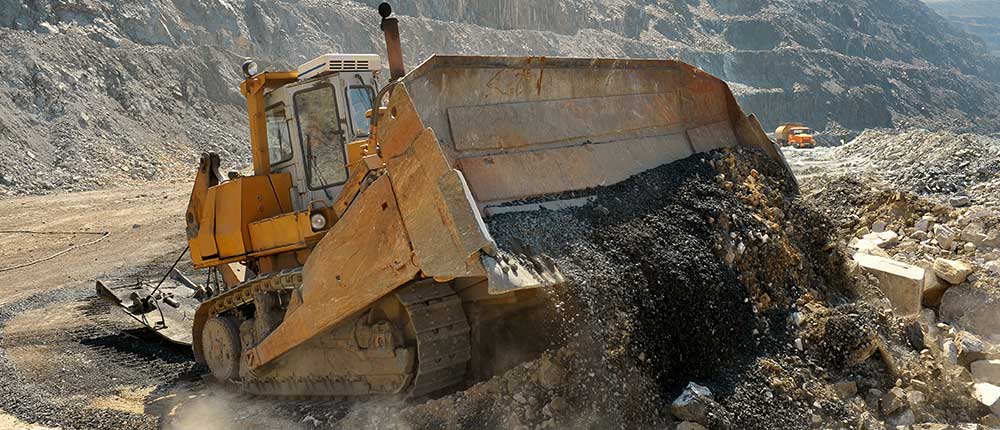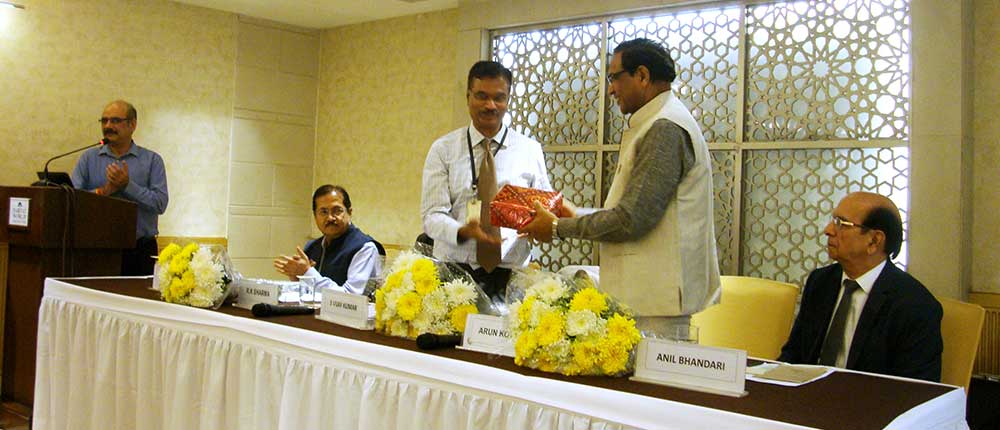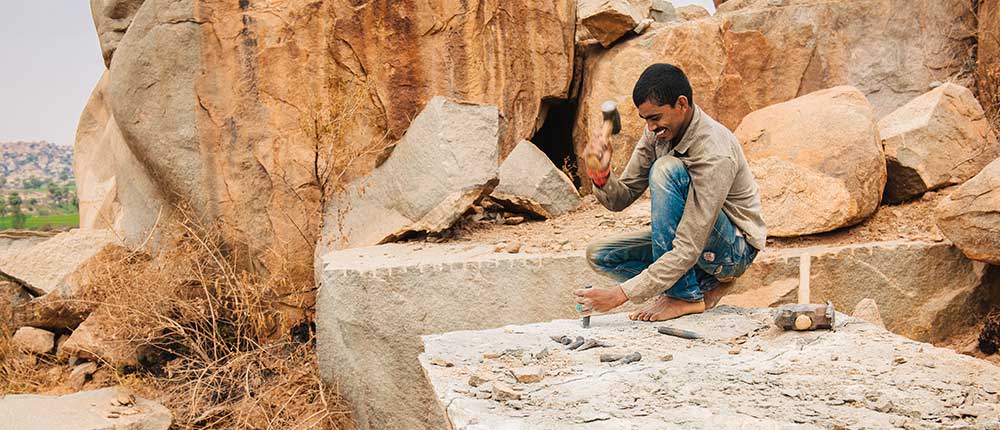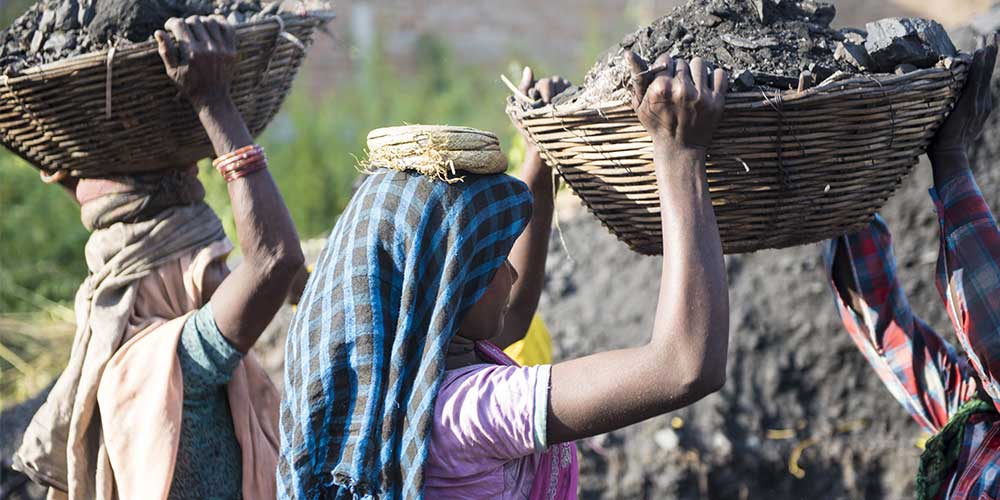Mr S Vijay Kumar, Distinguished Fellow, TERI, gave the keynote address at the Conference on Contemporary Mining Issues by the Mining Engineers Association of India (MEAI) in New Delhi

Since 1950, 13 economies have grown at an average rate of 7% per annum for 25 years or more. This sustained high growth has transformed these countries. That is what India is now aiming for; not as an end in itself, but to eliminate poverty and provide affordable health care and education and a decent life and means of livelihood for all citizens. The mining sector has an important role in the country's sustainable economic development, both as an engine of growth and as a revenue source to fund socio-economic development.
The 2030 Agenda of Sustainable Development with its 17 Sustainable Development Goals (SDGs) adopted unanimously by the United Nations (UN) in 2015 recognises that social and economic development depends on the sustainable management of our planet's natural resources. Sustainable development, including sustained and inclusive economic growth, social development, environmental protection, and the eradication of poverty and hunger is thus a common goal for all nations and the SDGs are a good benchmark to measure how well our actions are aligned with sustainability in all its forms. SDG 8.1 already incorporates the aspiration that developing countries should aim at growing at a rate of at least 7% per annum.

It is necessary to see how the governance framework for the mining sector, particularly post the 2015 amendment of the MMDR Act 1957, aligns to the goal of sustainable development in general and the SDGs in particular. It is not only important to see which SDGs are achievable (or advanced) through activities of the sector, but also which SDGs are adversely impacted and what can be done to reduce this impact. In fact, this should be a general approach to all sectoral policies of the government. In the case of mining, there is an advantage as the 'Sustainable Development Framework (SDF) 2011' brought out by the ministry is perfectly in sync with the approach of the SDGs.
One of the major changes brought in by the amendment of the MMDR Act in 2015 is the mandatory auction of all Prospecting License (PLs) and Mining Lease (MLs). The aim is ostensibly to impart 'transparency' and reduce 'discretion'. The point remains that a strict 'first -in-time' policy was also equally transparent and discretion-free and it was deviation from it that led to problems. Auctions too need not necessarily impart greater transparency and reduce discretion. For example, since the techno-economic feasibility of extraction has not been adequately established, the valuation for purposes of auction may be highly subjective, with possibility of the 'Winner's Curse', particularly when end-use is specified. Given the price volatility of the sector, auction may squeeze margins, leading to suboptimal mining. Low grades and secondary metals may in some cases not be properly exploited, quite contrary to the spirit of SDG 12.2 which speaks of 'efficient use of natural resources' and SDG 8.4 which advocates 'resource efficiency'; not to speak of SDG 12.5 which relates to 'reducing waste generation'. This may lead to sub-optimal mining and cherry picking of best grades by the current incumbent (impacting SDG 12.2 of resource efficiency).

Auction for a fixed period of 50 years is likely to interrupt orderly mine closure since the entity responsible for opening a large mine (likely to be productive beyond 50 years) may not be responsible for closing the mine at the end of the extraction (SDG 12.4 on environmentally sound management of waste throughout life cycle). Aligning post-closure land use with local community aspirations is a key component of the SDF and conforms to SDG 15.1 relating to 'sustainable use of terrestrial ecosystems' and SDG 15.3 which advocates moving towards a 'land degradation-neutral' world.
One of the other changes as a result of the amendment is that the earlier Reconnaissance Permit (RP) has been replaced by the Non-Exclusive Reconnaissance Permit (NERP). However, the NERP gives no rights to PL or ML. This will, of course, severely discourage exploration for minerals, notwithstanding the funding through a National Mineral Exploration Trust (NMET) established through the 2015 amendment. Exploration using trust funds will be constrained by the amount of funds available. The cumbersome processes inherent in such a process will also give premium to 'accountability' over 'risk-reward', reducing success rate, and impacting the supply-pipe of deposits ready for exploitation.
Another aspect of inadequate exploration resulting from changing from RP to NERP (without rights of PL/ML) will be suboptimal decisions with regard to mining in ecologically fragile areas to secure supply in the absence of choice (impacting SDG 15 on sustainability of ecosystems). Fuller exploration may have revealed other deposits, more easily accessible, or with less adverse impacts. The fact that NMET funds are public funds will result in their being deployed for discovery of the low-hanging fruit rather than the high-risk and high-cost ventures that can result in the discovery of world-class deposits or deep-seated deposits. This can adversely affect our minerals security, particularly for the new age 'Technology Metals' and 'Energy Critical Minerals' that are required for applications in renewable energy, energy storage etc. Our ability to advance SDG 7.2 'increase substantially the share of renewable energy in the global energy mix' as well as on SDGs relating to use of technologies to increase resource-use and energy-use efficiency may be seriously compromised in case exploration funding does not respond to market forces.
One of the key aspects to the National Mineral Policy of 1993 and 2008 was to level the playing field for private players vis-à-vis the public sector which dominated the industry in the pre-1991 period. Despite the amendment of 2015, public sector unites (PSUs) and PSU joint ventures (JVs) are exempt from auction (making fixed additional payments instead) and are entitled to renew their MLs. This will actually create a more non-level playing field, distort the sector and reduce incentives for efficiency (SDG 8.4 and 12.2) and new/innovative technologies (SDGs 8.2, 8.3).
It would also appear from 12.8 of NMEP that private exploration agencies engaged for exploration through NMET can also bid for the deposit. This will clearly lead inefficiencies at multiple levels caused by potential for data asymmetry (SDG 8.4 and 12.2).

One of the major provisions of the 2015 amendment (based in part on the 2011 MMDR Bill which had sought a sector reform based on the 2006 report of a high-level committee constituted by the Planning Commission and the National Mineral Policy 2008) is the creation of District Mineral Foundations (DMF) to work for the benefit of local communities impacted by mining-related activities. The DMF is a welcome step provided the Foundation prepares and executes systematically prepared plans (based on a local needs assessment) in a transparent manner in full consultation with all stakeholders including local communities (almost all SDGs are potentially impacted, particularly SDG 16.6 'transparent and accountable institutions' and SDG16.7 'inclusive, participatory and representative decision-making'). The Pradhan Mantri Khanij Kshetra Kalyan Yojana (PMKKKY) issued by the central government to guide the use of DMF funds is a useful framework, but it needs to be revised keeping in view the SDG framework in the local context, as well as the SDF for the mining sector (SDG 17.14 'policy coherence').
While the MMDR amendment seeks to address issues of transparency and fair valuation, it has not addressed the following two key issues responsible for the problems of the sector (which were in fact addressed in the 2011 MMDR Bill) -
- Regulation: There is a need for independent national and state-level sectoral regulators and dispute resolution mechanisms with adequate expertise
- Capacity: Capacities in IBM, GSI, state DMGs and other institutions of the sector need to be built to meet the challenges and take advantage of the opportunities
Mining can be either a source of revenue for funding national socio-economic development plans or an engine of growth for the economy. One can be mindful of what the Supreme Court said in the Presidential Reference Case in 2012 -
"Article 39(b) mandates that the ownership and control of natural resources should be so distributed as to best serve the common good... Distribution has broad contours and cannot be limited to meaning only one method, i.e. auction… Revenue maximisation is not the only way in which common good can be subserved… Revenue considerations may assume secondary consideration to developmental consideration… Therefore the submission that the mandate of Article 14 is that any disposal of a natural resource for commercial use must be for revenue maximisation, and thus by auction, is based neither on law nor on logic."
